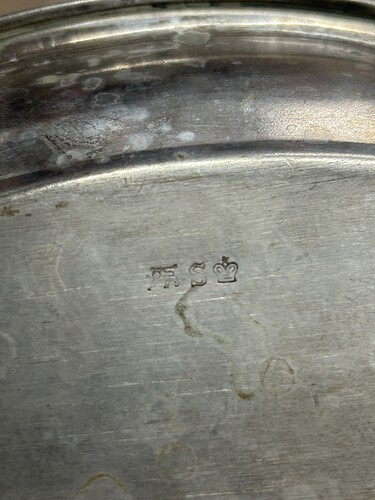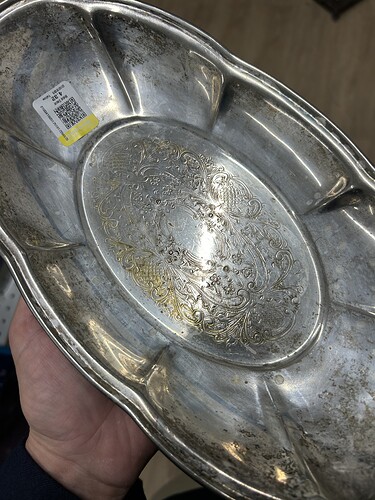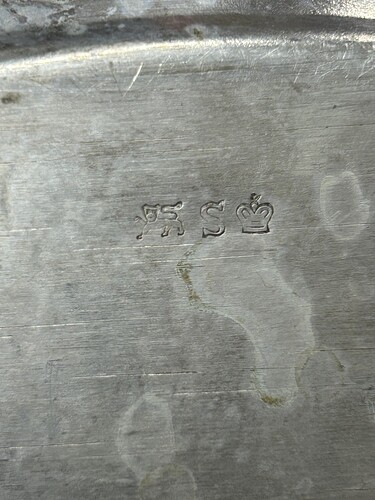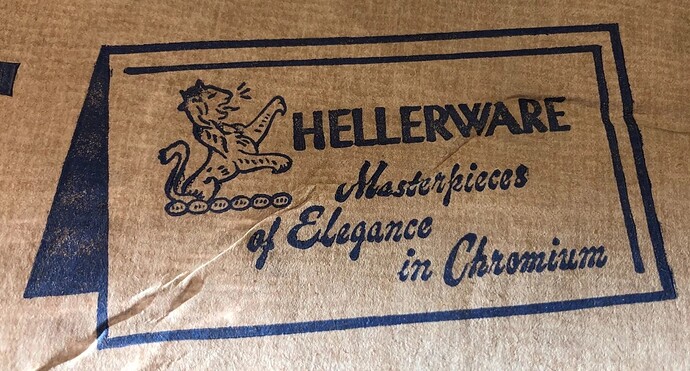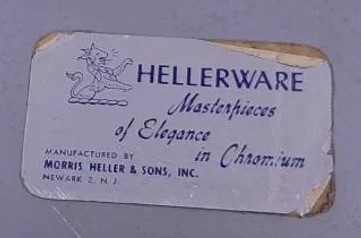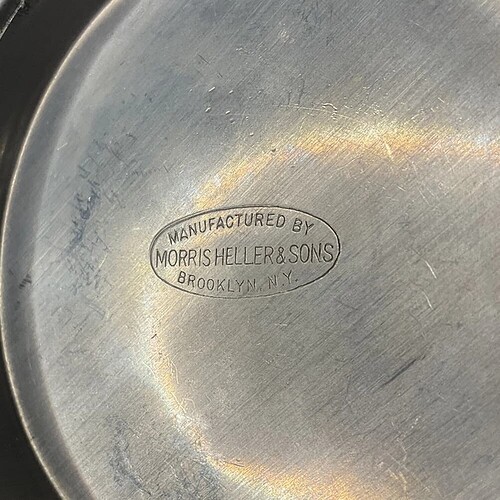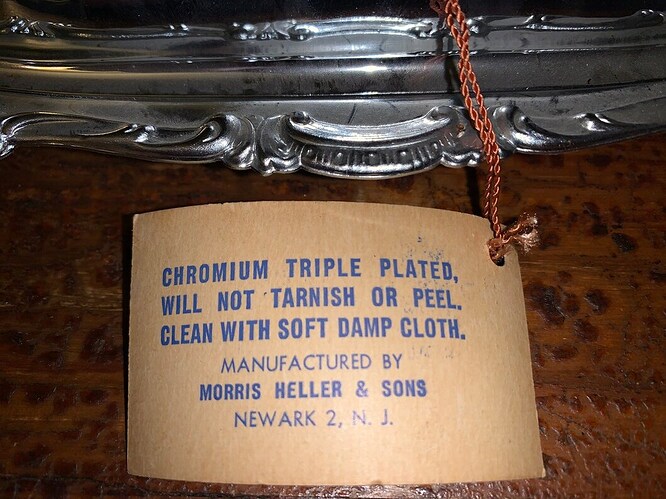Help guys !
This is definitely not U.K. sterling, or any other kind of sterling, for that matter. This is probably American silver plate. Not sure who the maker is, but there were a bunch of them who freely sprinkled their wares with lions and crowns, in the hopes of bamboozling the rubes. ![]()
Appreciated !! I’m
Trying to learn the differences In marks.
The place to start is here:
In particular, the third link on the page, for identifying U.K. sterling hallmarks. Just wander around a bit, and look at the images. You will very quickly get a feel for what the “real thing” should look like. Note the fact that the marks are all “punches,” with frames around them. The shape of the punch is just as important as the character itself. The same is true of the date letters - the typography is important (upper case, lower case, italic, etc.), but the shape of the punch shouldn’t be ignored. Note which sovereign, if any, is included in the hallmark.
Start by identifying the city in which a piece was assayed. Then you can move on to the date letter. In the charts, clicking on the date will pull up a little photo of the hallmark.
Once you know what real hallmarks look like, you can almost “smell” a fake.
For pieces from the U.S., Canada, or Mexico, it’s a pretty safe bet that if it doesn’t clearly say, “STERLING,” it isn’t. No one who produces sterling silver items wants to disguise that fact.
Silver from the rest of Europe can be a lot trickier to ID. The hallmarking systems are varied, and are often not well documented. That’s when a forum like this can be a life-saver. Someone will look at the marks and say, “Oh, I recognize those marks! It’s Denmark, early 20th Century!!” ![]()
Yup, that’s it! 1950’s, and not even silverplate - looks like they were just chrome plated.
